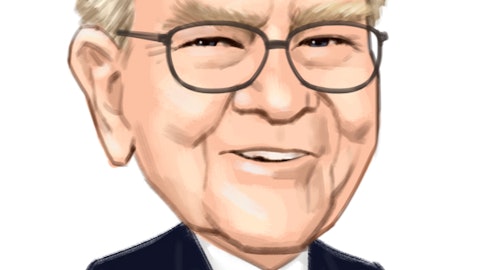#3 Wal-Mart Stores, Inc. (NYSE:WMT)
Wal-Mart Stores, Inc. (NYSE:WMT) is the largest retailer in the world. The company has generated sales of $482 billion over the last 12 months.
Each week, nearly 260 million customers and members visit Wal-Mart’s 11,535 stores under 72 banners in 28 countries and e-commerce websites in 11 countries.
The company has struggled since stock price highs of $88.51 reached in January of 2015. Wal-Mart stock fell all the way to $55.83 in November of 2015; a 36% drawdown.
Since November, the company’s stock has rebounded 18.8%. Wal-Mart’s stock price tells a story.
Wal-Mart’s success is driven by its low prices.
The company’s stock price declines are being driven in large part by wage increases for the company’s workers which reduce margins.
Wages are one of the largest expenses at Wal-Mart. A large part of the company’s ability to keep prices is low is to pay low wages. Wage increases have caused operating income to decline by 16.4% versus the same quarter a year ago.
Wal-Mart is gambling these wage increase will create a more incentivized work force that will drive greater revenue growth over the long run. The company is also likely increasing wages to prevent backlash from paying ‘unfair wages’.
Wal-Mart grew constant currency revenue 2.2% in its latest quarter. While this isn’t tremendous growth, the company’s decline over the past year is a result of falling margins rather than falling sales.
The company recently closed stores that were not a good fit for Wal-Mart’s strategy going forward. Excluding these store closures, the company’s management is expecting constant currency revenue growth of 3% to 4% a year in its next fiscal year. With store closures, constant-currency revenue is expected to be relatively flat.
When a company sees revenues decline, that means it is losing customers.
Wal-Mart’s operations continue to generate more sales than any other company in the world. The company’s business model is viable.
Operating margin declines are due to wage increases. The company will not increase wages rapidly every year. When wages stabilize, Wal-Mart will return to growth.
The company generates tremendous free cash flows (even with higher wages). Wal-Mart generated $15.9 billion in free cash flow in its fiscal 2016 (Wal-Mart’s fiscal year ends January 31st). The company returned $10.4 billion to shareholders in the form of dividends and share repurchases over the year.
At current prices, Wal-Mart has a shareholder yield of nearly 5%. The company’s dividend yield is 3% and it repurchased around 2% of shares outstanding in its last fiscal year. Share repurchases were depressed from what they could be as the company is investing heavily in wages and digital growth.
When operations normalize, Wal-Mart investors should expect solid total returns from the following sources:
– Revenue growth of 3% to 4% per year
– Dividend payments of 3% per year
– Share repurchases of 2% to 3% per year
– Margin improvements of 0% to 1% per year
Together, this comes to expected total returns of between 8% and 11% per year.
An investment in Wal-Mart today will likely generate double-digit returns over the long-run due to valuation multiple gains. Wal-Mart is likely undervalued at current prices. The company is trading near its highest dividend yield ever. In addition, the company has a low price-to-earnings ratio of 14.6.
Wal-Mart Stores, Inc. (NYSE:WMT) generates more revenue than any business in the world; more than 4x that of Amazon.com, Inc. (NASDAQ:AMZN). The company has paid increasing dividends for 43 consecutive years. The company has a strong and durable scale based competitive advantage.
The company is a favorite of The 8 Rules of Dividend Investing due to its above average 3% dividend yield, low stock price volatility, low price-to-earnings-ratio, and solid expected total returns.
Wal-Mart registered a considerable decrease in popularity among the smart money investors followed by Insider Monkey. The number of funds with long positions slid to 49 from 61, while the aggregate value of their holdings dropped to $6.56 billion from $7.09 billion during the fourth quarter. In addition to Berkshire Hathaway, Bill & Melinda Gates Foundation Trust, managed by Michael Larson, held 11.60 million shares of Wal-Mart at the end of 2015.
Follow Walmart Inc. (NYSE:WMT)
Follow Walmart Inc. (NYSE:WMT)
#4 AT&T Inc. (NYSE:T)
AT&T Inc. (NYSE:T) is Warren Buffett’s highest yielding dividend stock. AT&T currently has a 5.2% dividend yield – more than double the S&P 500’s 2.3% dividend yield.
AT&T shareholders are not new to dividends. The company has paid increasing dividends for 32 consecutive years.
As has been discussed in this article, Warren Buffett looks for businesses with strong and durable competitive advantages.
AT&T does not disappoint in this department.
The company’s competitive advantage comes from being one of two dominant players in the oligopolistic United States telecommunications market.
Note: Verizon (VZ) is the other dominant company.





